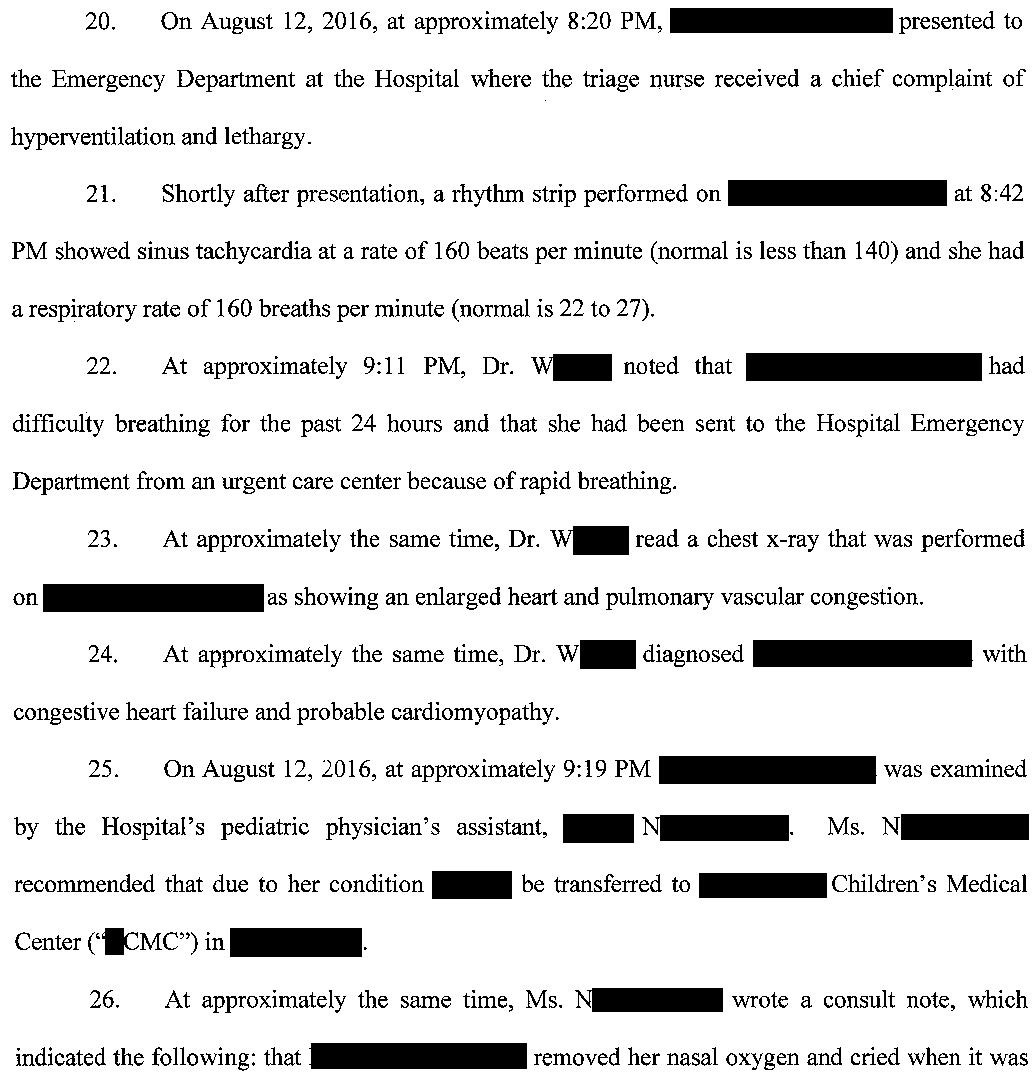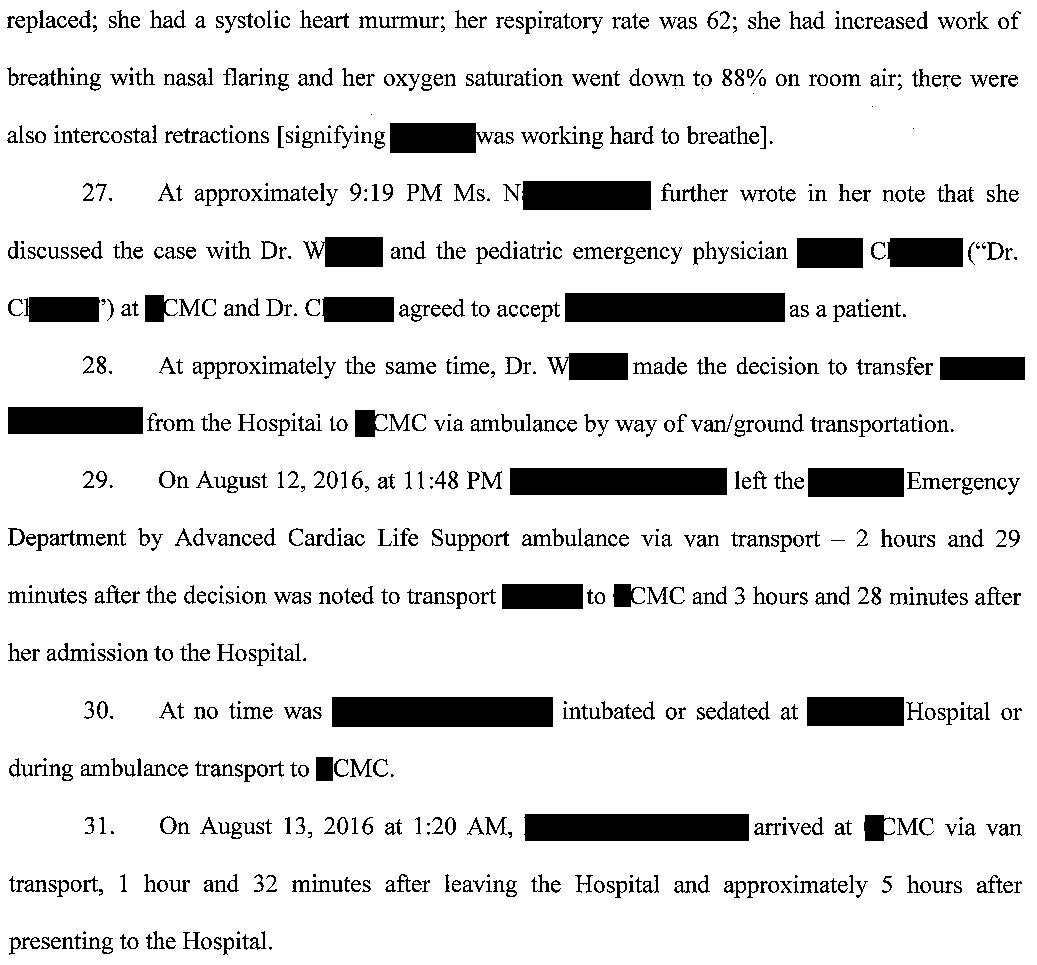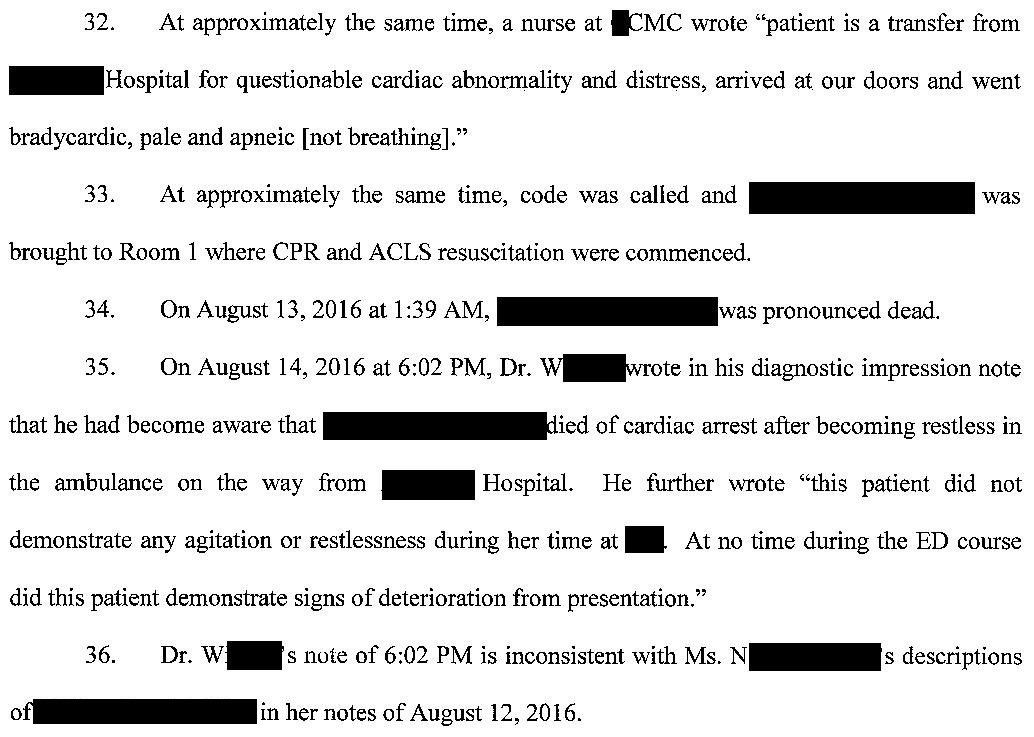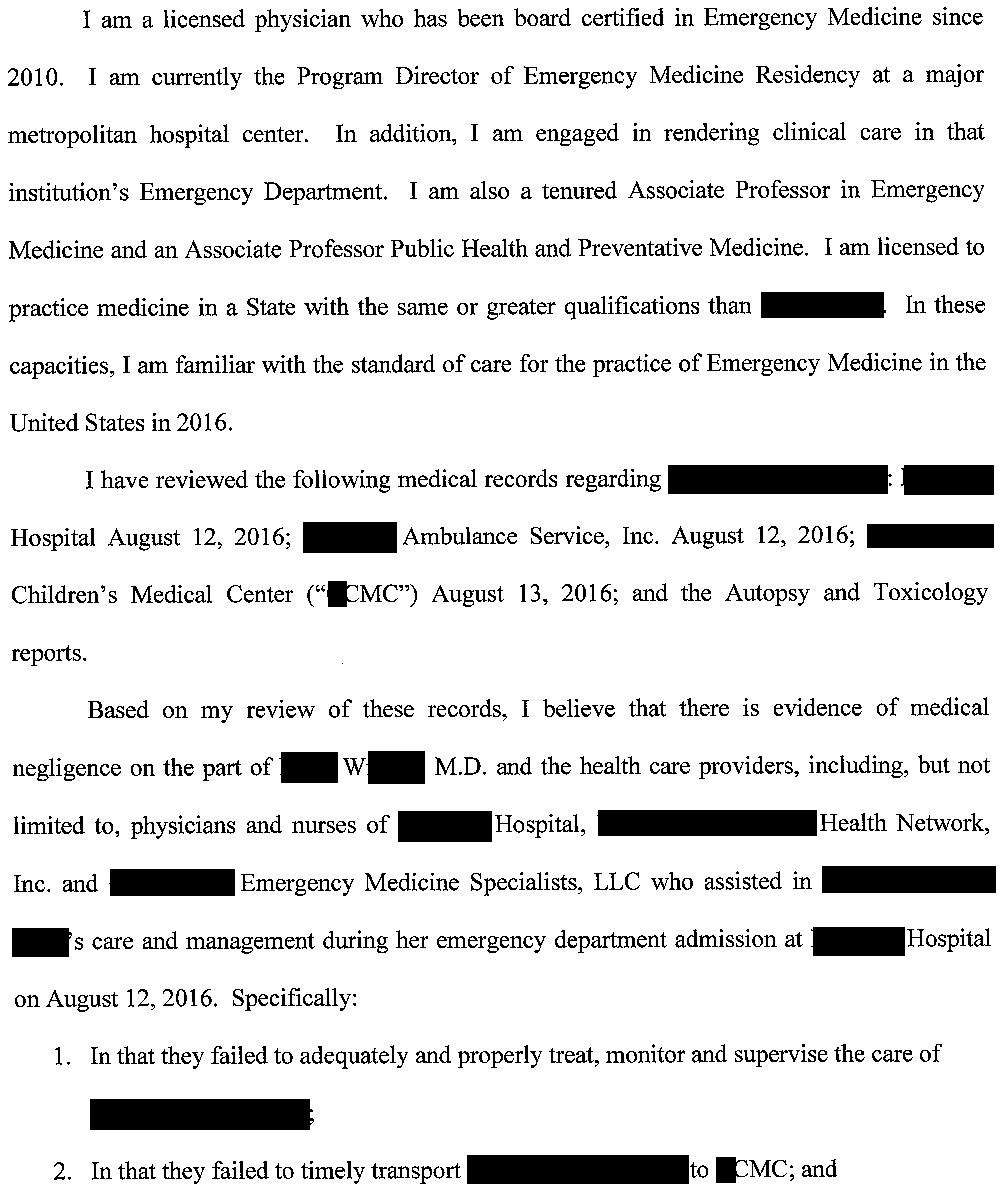An 18-month-old girl presented to an ED with respiratory difficulty.
She was previously healthy.
The ED physician noted cardiomegaly on her CXR.
He consulted the inpatient pediatric team, and a PA came to the ED to see the patient.
After seeing the patient, the PA felt that her care would be beyond the small hospital’s capability and recommended transfer to a large pediatric hospital.
It took approximately 2.5 hours for EMS to arrive and take the patient.
After a 90 minute drive, the patient arrived at the pediatric hospital.
Immediately on arrival, the patient was noted to be bradycardic, pale, and went apneic.
She went into cardiac arrest.
Despite attempts at resuscitation, she died.
Join thousands of doctors and attorneys on the email list.
Her family filed a lawsuit against the ER doctor.
The plaintiff’s description of events is shown here:
Become a better doctor by reviewing medical malpractice cases.
Paying subscribers get a new case every week.
The plaintiff’s expert witness wrote this opinion:
The lawsuit was settled, the terms are confidential.
MedMalReviewer Analysis:
Sick kids usually compensate pretty well for much longer than adults, then have a seemingly abrupt hemodynamic collapse. This case is a perfect illustration. The signs of impending catastrophe are much more subtle in children, especially compared to critically-ill adults who give off very obvious warning signs for a much longer time period.
This child’s respiratory rate was one of the key red flags. It was documented from 62 breaths/minute all the way up to 160 breaths/minute (so high that it makes me question if it was documented correctly). Documented vitals that extreme should trigger you to have the nurse correct the error or go directly to the bedside and confirm for yourself. A quick glance at a child may only show mild retractions and their overall appearance may not seem that concerning, but if their respiratory rate is that fast, they’re tricking you. Don’t be fooled. Vitals signs play an especially prominent role in pediatric malpractice cases, as seen in 2 prior cases linked here and here.
Another key red flag here is the patient’s underlying physiology. The vast majority of previously healthy kids in a community ED with respiratory difficulty have a simple respiratory virus. They have good cardiac reserve and are able to compensate for their respiratory illness. You can suction them, get their fever down, and they’ll do pretty well. This case was totally different because the patient seemed to have new-onset cardiomyopathy (judging by the cardiomegaly and congestion on CXR). She didn’t have the underlying hemodynamic reserve to compensate for the respiratory issues.
The delay in transfer seen in this case is very common. Even if you try to move quickly to get a patient out, it often takes hours to find an EMS crew and get on the road. A helicopter can move much faster than an ambulance once airborne, but there are more logistical issues with helicopter transport that often end up making the door-to-door time just a long. Many large pediatric hospitals have their own peds critical care retrieval programs, which can send specially-trained staff with equipment directly to your ED to pick up a sick child.
The ED doctor went back and made an addendum to his note after learning the patient died. This is almost always a bad idea. At the very least, call your hospital attorney or risk management department and ask them before adding anything to the chart. Nothing you write at that point can prevent a lawsuit, and it usually makes your defense much more challenging. This same issue has come up in 2 other cases (linked here and here).
The expert witness report itself gave basically no useful clinical information (I almost didn’t publish it because it was so limited, but I think there’s enough here to spark a good discussion). I don’t think its intellectually honest to write an expert witness opinion criticizing someone and not give at least a basic summary of the clinical events from a physician’s perspective. The opinion was clearly heavily coached and probably written by the plaintiff’s attorney. Even worse, the expert mentions an autopsy but doesn’t include even a basic summary of what was found.
After reflecting on this case, here are 3 things I’ll do differently in the future with similar cases:
Stay alert for the subtle red flags that are unique to children
Give the kid respiratory support with positive pressure (probably start with high flow / Optiflow)
Ask the peds hospital to send their retrieval team
What would you have done differently in this case?









1) make sure vital signs are correct
2) if truly that fast(over 70) and long transport, consider intubation prior to transfer, and 3) agree would have requested higher transport skills is possible at all. This child likely would have died regardless but give the care you can.
in regards to intubating, interesting thought, perhaps correct, but if there was a degree of right heart failure too, (which certainly might be the case with , say, myocarditis), positive intrathoracic pressure from the vent might cause complete cardiovascular collapse.
I'm just a simple ED doc at a large rural community hospital (merced, calif); I might have considered and like to see my own bedside US heart lungs, ecg, trop, labs, lactate.
what was BP? pressers? dobutamine? lasix? is it possibly cardiac stress secondary to sepsis?
again , retrospection is easy , so I apologize, but that is one of the important points of this format... to discuss, and perhaps learn form each other. the child was in the first ER for hours, and some or all of this might have been obtained, done.